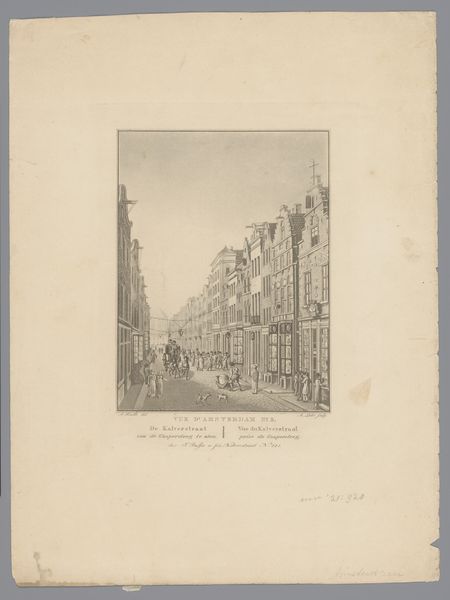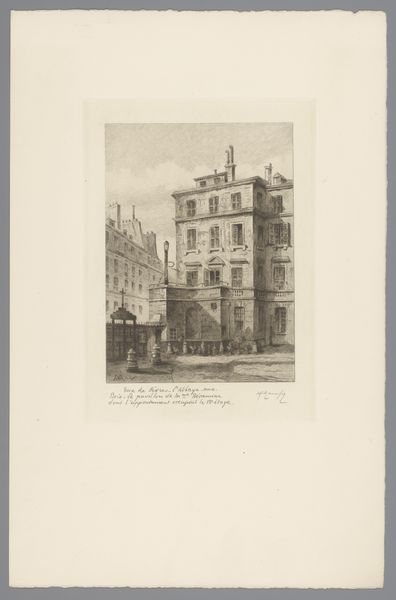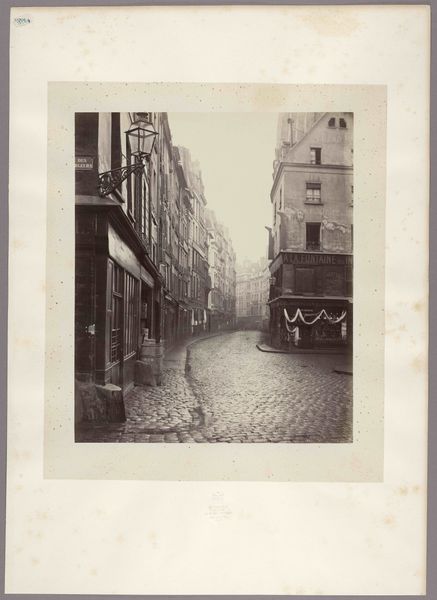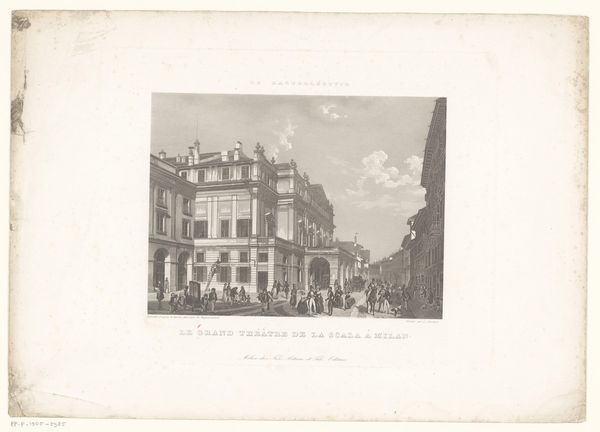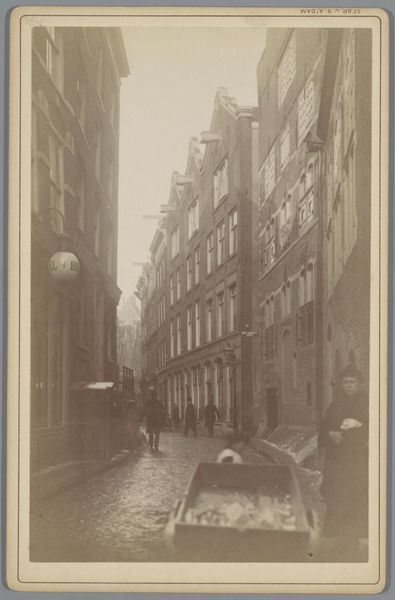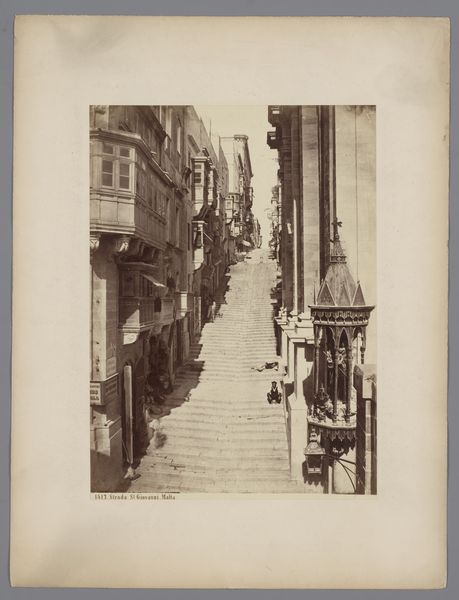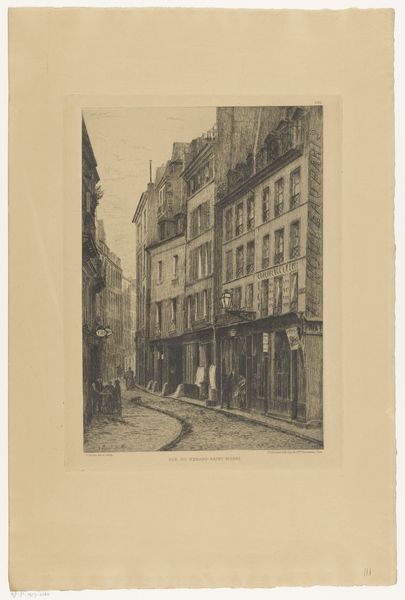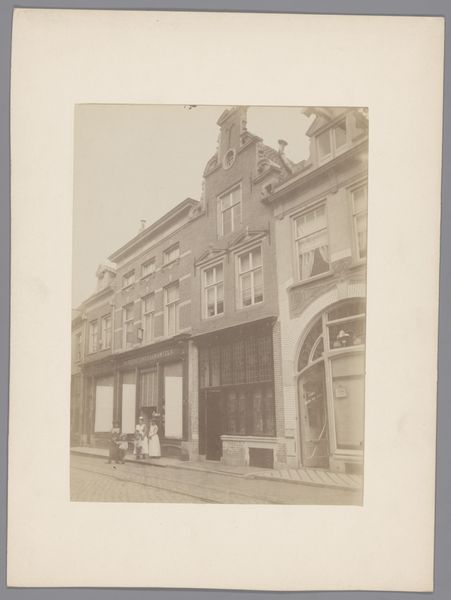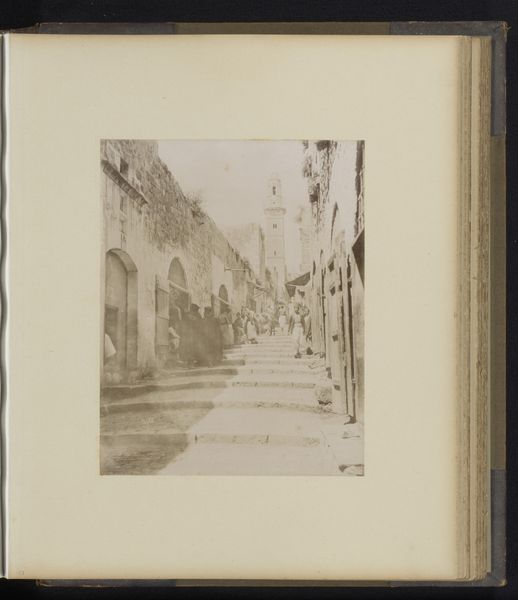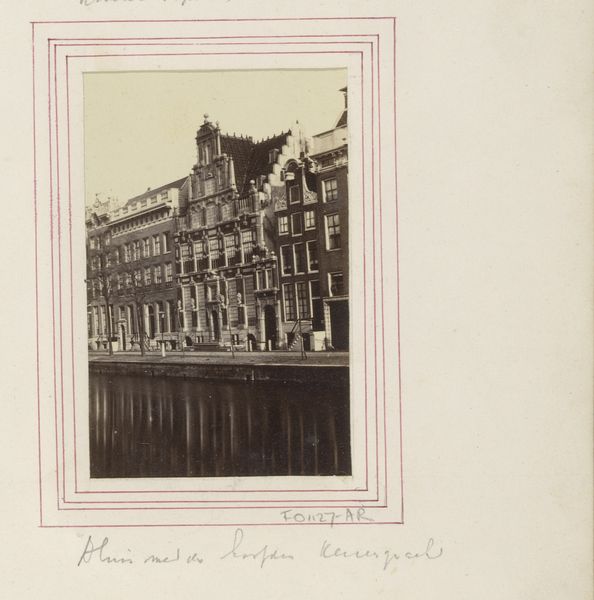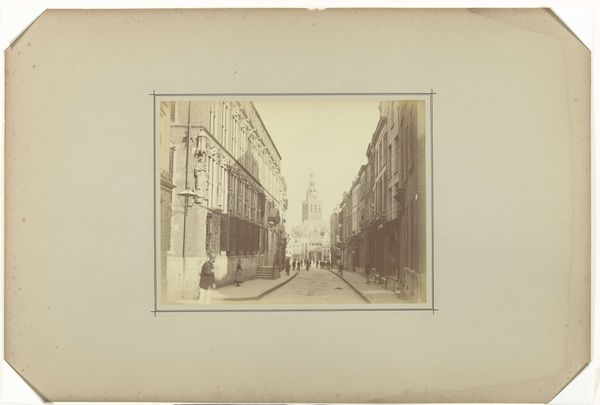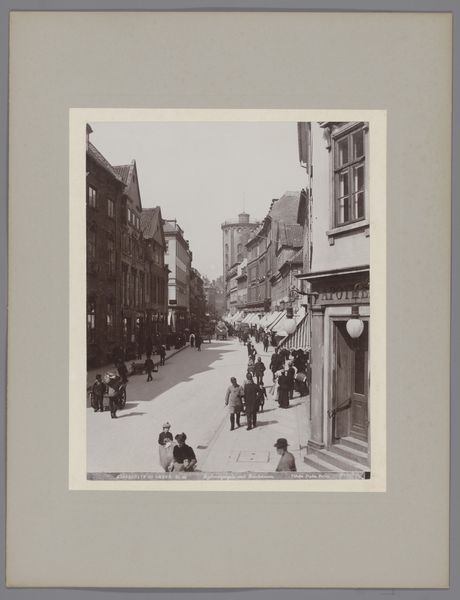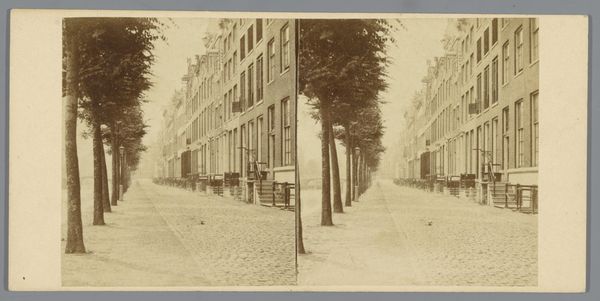
photography
#
dutch-golden-age
#
photography
#
cityscape
#
watercolor
#
realism
#
building
Dimensions: height 90 mm, width 58 mm
Copyright: Rijks Museum: Open Domain
Curator: Looking at this 1865 photograph by Pieter Oosterhuis, entitled "Huizen met trappen aan een gracht in Amsterdam," I am struck by the immediate impression of quiet order, almost a somber dignity conveyed by the rows of houses. Editor: There is certainly a certain austere feel about it, but I immediately notice the contrast in textures, particularly how the rough cobblestones of the street stand against the smooth brick of the buildings. I am curious about the labour involved in obtaining and working those different materials in mid-19th century Amsterdam. Were they sourced locally? And who was doing the labor to make these cobblestones, which had such great impact on trade? Curator: Those are excellent points. It’s vital to remember Amsterdam’s place as a major center for trade at this time, how urban expansion changed under societal and institutional forces in the 1860s, when photography became so prevalent documenting and influencing such events, for example in public works projects like new canal constructions or improvements of buildings along the waterfront. Photography offered new avenues to showcase modernity, and this image subtly feeds into that. Editor: I see your point about progress. But how staged or curated was it to emphasize trade and labor practices? The symmetry is appealing. And what about those stoops that connect the street with the houses’ elevated entries. Why? And by whom are these materials moved along its street? This feels less a monument to progress, more a document of a specific economic system at a particular stage of production, one shaped by both material constraints and distribution networks. Curator: Absolutely. These subtle details, along with photography's relative novelty, significantly changed the reception of architecture and urban space. While offering new insights, it framed our engagement with this built environment according to social conditions. Perhaps Oosterhuis intended his photos for use by urban planners and civil works projects that helped restructure Amsterdam to meet new global requirements. Editor: So, even what seems like a simple image of a street corner tells an entangled story of production, access, class, and how Amsterdam saw—or wished to see—itself during this time. A nexus where so many hands helped make it. Curator: Indeed. The image becomes more compelling when understanding that what is revealed through the lens reflects both artistry and prevailing norms and structures. Editor: Right. It’s a glimpse into a particular intersection of resources, labor, and, importantly, capital. A striking intersection that continues to resonate across time.
Comments
No comments
Be the first to comment and join the conversation on the ultimate creative platform.
